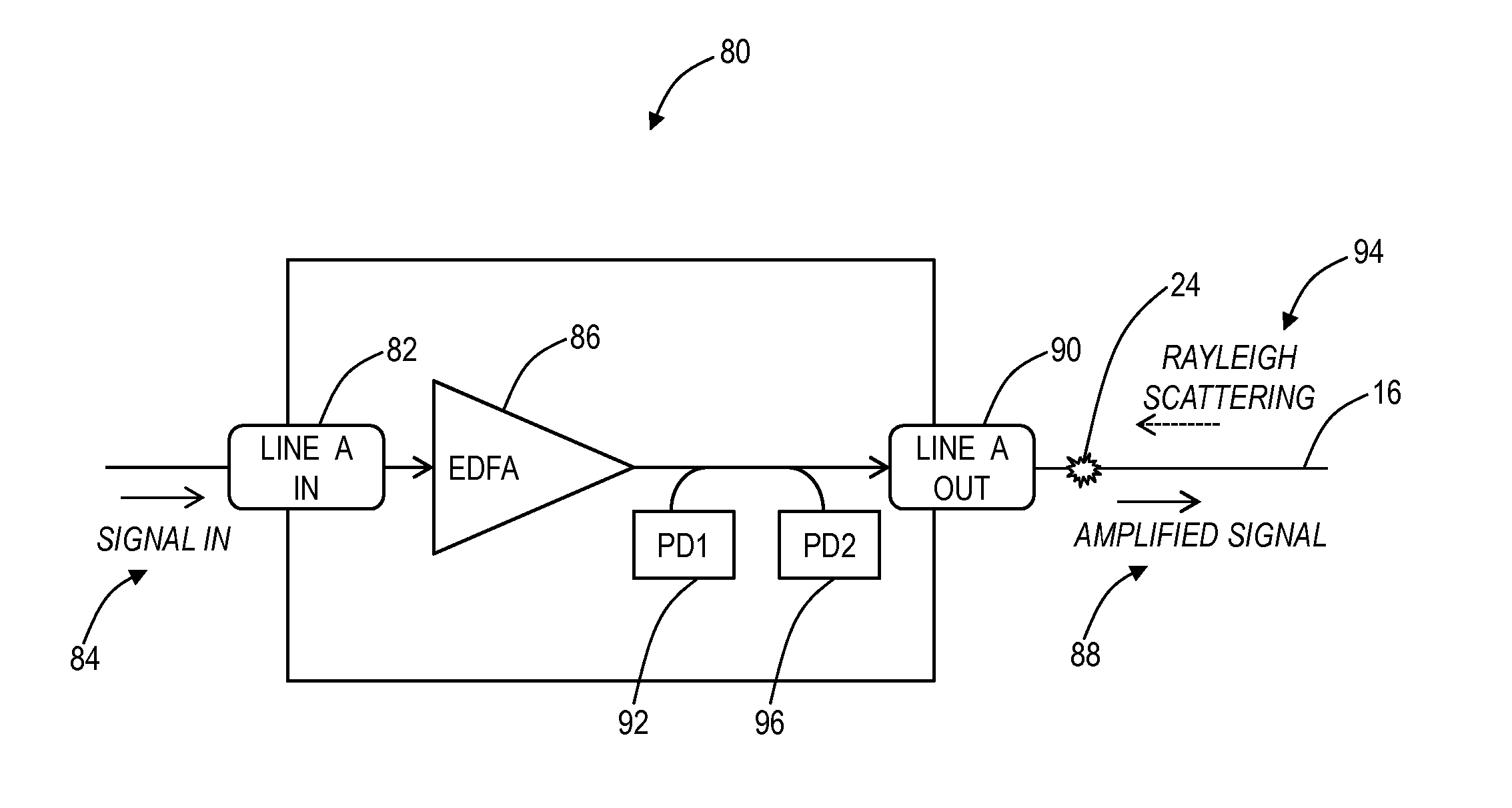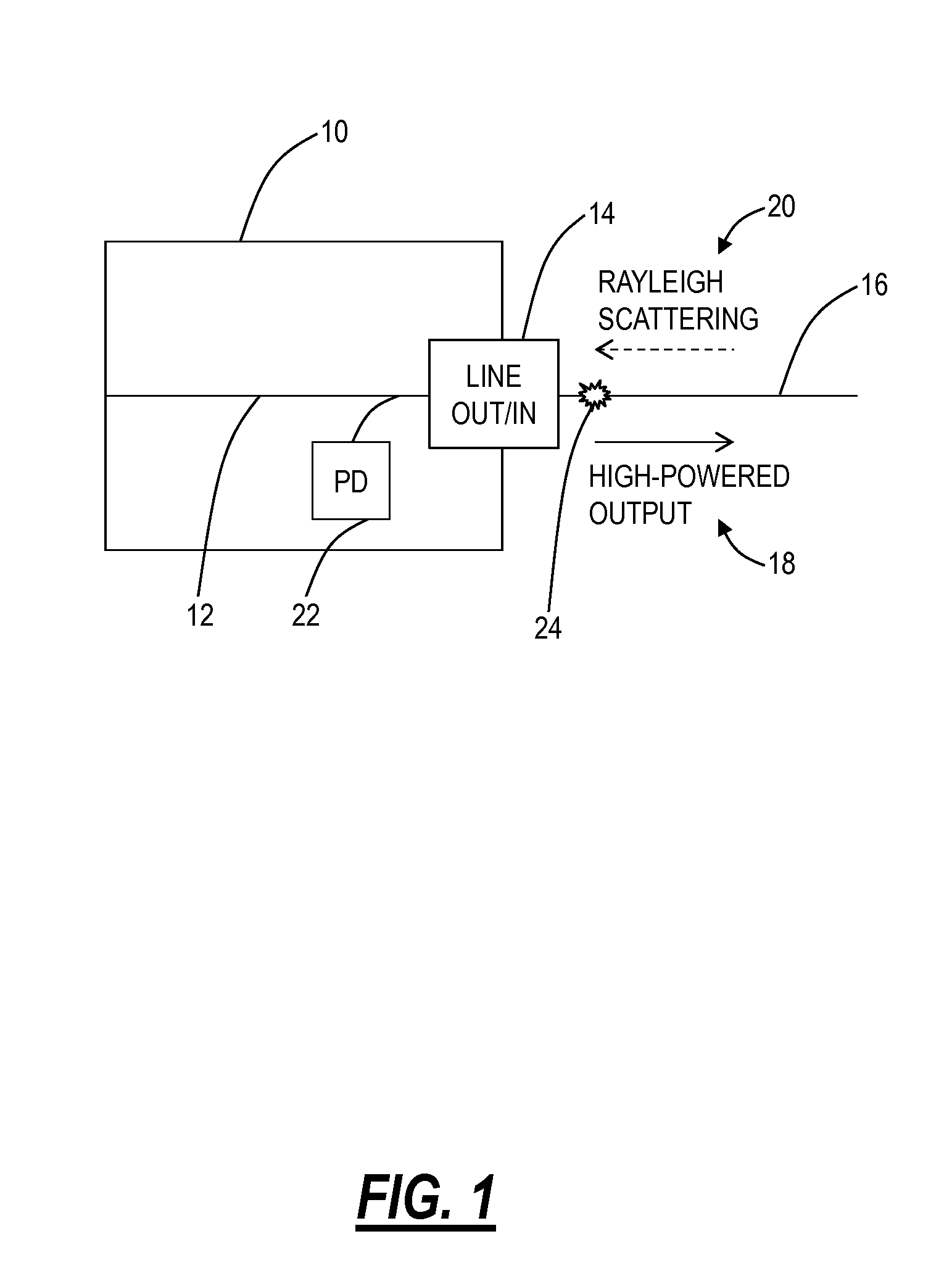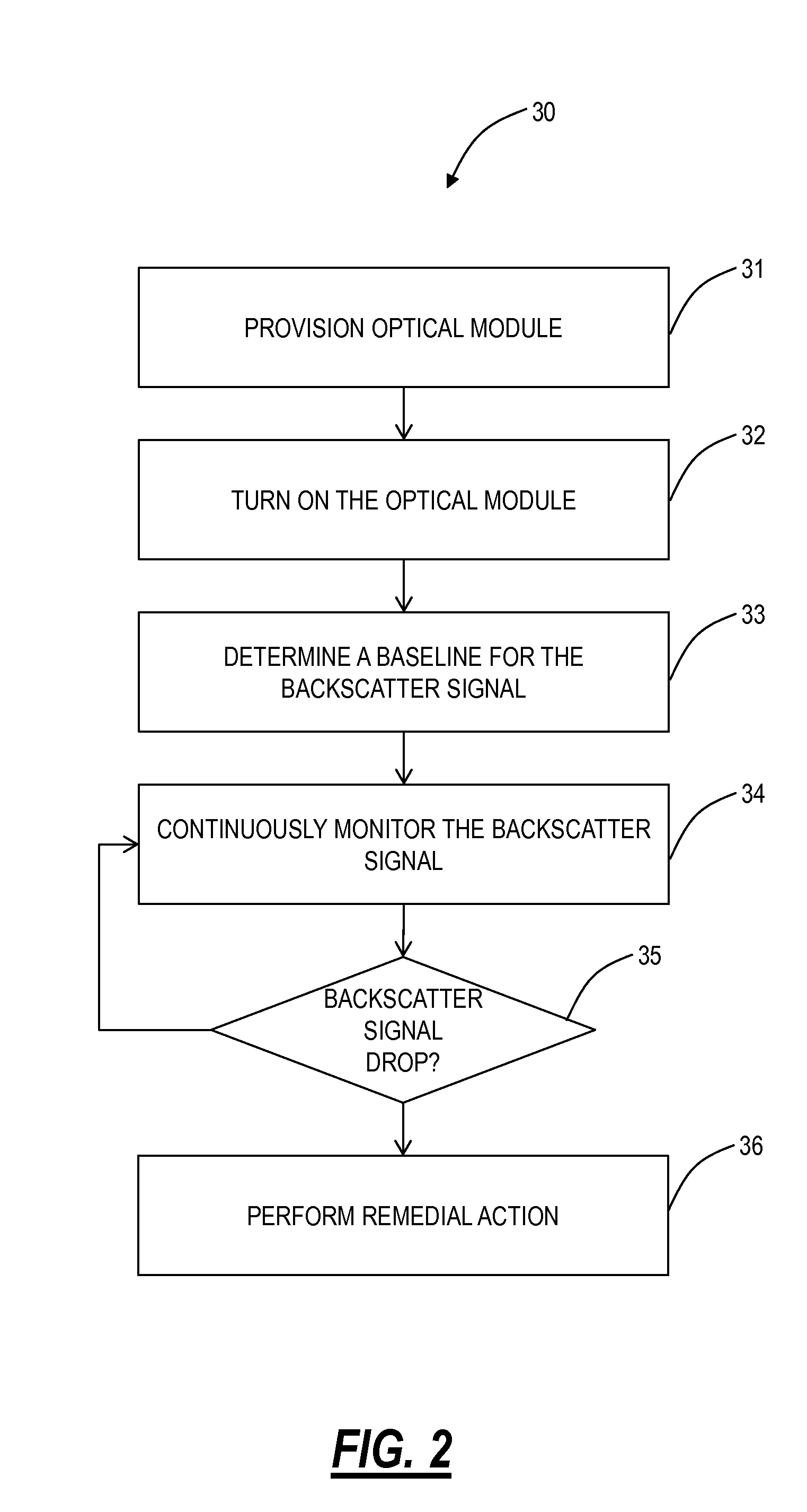High-powered optical module safety systems and methods
a technology of optical modules and safety systems, applied in the field of fiber optic systems and methods, can solve the problems of large fraction of light to exit the fiber, damage to the fiber cable itself or equipment, fire hazards, etc., and achieve the effect of reducing the optical power output of the optical module and reducing the power of the optical pump
- Summary
- Abstract
- Description
- Claims
- Application Information
AI Technical Summary
Benefits of technology
Problems solved by technology
Method used
Image
Examples
Embodiment Construction
[0014]In various exemplary embodiments, high-powered optical module safety systems and methods are described which can detect discontinuities such as a fiber pinch and perform automatic remedial mechanisms based thereon. The high-powered optical module safety systems and methods provide an automatic mechanism to detect and quickly shutdown or reduce amplifier power before any significant damage can occur. The high-powered optical module safety systems and methods can apply to Raman amplifiers and / or EFDAs. Advantageously, the high-powered optical module safety systems and methods solve an important safety problem for users of high-power amplifiers in an efficient implementation that can reuse components typically are already in place in most Raman amplifiers and EDFAs, therefore adding little to no cost.
[0015]Variously, the high-powered optical module safety systems and methods monitor a backscattered signal to detect fiber pinches. Advantageously, the use of the backscattered signa...
PUM
| Property | Measurement | Unit |
|---|---|---|
| distance | aaaaa | aaaaa |
| insertion losses | aaaaa | aaaaa |
| power | aaaaa | aaaaa |
Abstract
Description
Claims
Application Information
 Login to View More
Login to View More - R&D
- Intellectual Property
- Life Sciences
- Materials
- Tech Scout
- Unparalleled Data Quality
- Higher Quality Content
- 60% Fewer Hallucinations
Browse by: Latest US Patents, China's latest patents, Technical Efficacy Thesaurus, Application Domain, Technology Topic, Popular Technical Reports.
© 2025 PatSnap. All rights reserved.Legal|Privacy policy|Modern Slavery Act Transparency Statement|Sitemap|About US| Contact US: help@patsnap.com



